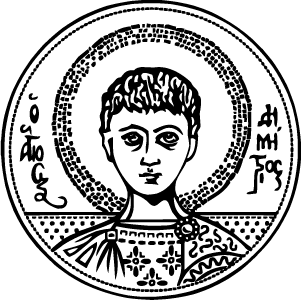For the scientific program 10-15 June, please click here. The talks of the school are broadcasted and the recording of the school can be found here for Monday, Tuesday, Wednesday, Thursday and Friday respectively.
Introduction to the PhD program Goran Djordjevic slides.
The titles, abstracts and literature of the lectures follow:
1. Black holes and quantum physics [Tarek Anous]
This course will give a review of the latest half-century’s developments related to quantum aspects of black holes. We will start with the laws of black hole thermodynamics as developed by Bekenstein and Hawking, followed by an introduction to black hole radiation. I will then introduce the black hole information paradox as diagnosed by the page curve, as well as recent developments involving entanglement islands that suggest a resolution. In the final lecture, I will explain why I believe the information paradox remains unresolved.
Selected review articles:
Samir Mathur: The information Paradox, a pedagogical introduction https://arxiv.org/abs/0909.1038
Daniel Harlow: Jerusalem Lectures on black holes and Quantum Information https://arxiv.org/pdf/1409.1231.pdf
Almheiri, Hartman, Maldacena, Shaghoulian, Tajdini: The entropy of Hawking radiation https://arxiv.org/pdf/2006.06872.pdf
2. Introduction to AdS/CFT correspondence and holography [Nikolay Bobev]
I will summarize the basic ideas behind the celebrated gauge/gravity dualiy, known also as AdS/CFT, which arises out of string and M-theory. I will introduce some basic facts about string theory, supersymmetry, supergravity, anti de Sitter (AdS) space, and Conformal Field theory (CFT), I will then proceed to show how the duality can be used to calculate correlation functions in strongly interacting CFTs. I will also discuss some aspects of black hole thermodynamics in AdS and how this informs the physics of the dual CFT at finite temperature.
Plan:
Lecture 1: Motivation, strings, branes, supersymmetry, and supergravity
Lecture 2: Basics of AdS and CFT
Lecture 3: Correlation functions in AdS/CFT
Lecture 4: Black holes in AdS and thermal CFT physics
Literature:
I plan to follow mostly these three reviews
https://arxiv.org/abs/hep-th/9905111
https://arxiv.org/abs/hep-th/0201253
https://arxiv.org/abs/hep-th/0209067
3. Lectures on flat space holography [Daniel Grumiller]
The holographic principle posits that quantum gravity in D+1 dimensions is equivalent to quantum field theory in D dimensions. The AdS/CFT correspondence is its best-known implementation. It is natural to ask whether the holographic principle works in dS or flat space. These lectures address the latter. We review general aspects of holography and introduce the two main approaches to flat space holography, Carrollian and Celestial holography.
Selected review articles:
https://arxiv.org/abs/1609.06203
https://arxiv.org/abs/1709.09871
https://arxiv.org/abs/2310.12922
Material presented in the first, second, third and the fourth lectures. As well as the first and second set of the exercises.
4. Introduction to Conformal Field Theory [Slava Rychkov]
These lectures will give introduction to conformal field theories in various dimensions, with applications related to topics of particular interest, such as the conformal bootstrap program and boundary conformal field theory. We assume the audience to have basic knowledge of quantum field theory. Familiarity with string theory may help, although it is not a prerequisite.
Literature:
The main reference will be:
– D. Simmons-Duffin: Caltech Conformal Field Theory lecture notes
See also:
– J.D. Qualls: Lectures on Conformal Field Theory [arXiv: 1511.04074]
– S. Rychkov: EPFL Lectures on Conformal Field Theory in D>= 3 Dimensions [arXiv: 1601.05000]
– D. Simmons-Duffin: TASI Lectures on the Conformal Bootstrap [arXiv: 1602.07982]
5. Renormalization in CFT, AdS and dS [Kostas Skenderis]
In this set of lectures, I will discuss renormalization in several different, yet related, contexts. I will start by discussing renormalization of correction functions in CFT. Renormalization is needed due to UV divergences at coincident points, and I will discuss how to identify and then renormalize the divergences by working in momentum space. Such renormalization is responsible for conformal anomalies (among other things). The CFT UV divergences map to infrared divergences in AdS by the AdS/CFT correspondence and I will then show how to deal with them in AdS using holographic renormalization. QFT in AdS has also bulk UV divergences and our next topic would be to show how to renormalize those. The AdS infrared divergences have an analogue in de Sitter (and cosmology). In the de Sitter context, they appear as late time divergences in cosmological correlators, and I will discuss how to renormalize these divergences by wavefunction renormalization of the late-time bulk field.
Plan
Lecture 1: CFT in momentum space and renormalization
Lecture 2: Holographic renormalization
Lecture 3: Renormalizing bulk loops in AdS
Lecture 4: Renormalizing IR divergences in dS
Literature:
Lecture 1:
https://arxiv.org/abs/1304.7760
https://arxiv.org/abs/1510.08442
Lecture 2:
https://arxiv.org/abs/hep-th/0209067
https://arxiv.org/abs/hep-th/0209067
Lecture 3:
https://arxiv.org/abs/2208.11539
Lecture 4:
https://arxiv.org/abs/2207.02872
https://arxiv.org/abs/2312.17316
6. Introduction to Modern Cosmology [Vassilis Spanos]
These lectures will offer a primer on contemporary cosmology and astroparticle physics, highlighting recent developments in the field. Specifically, we will examine up-to-date insights into Dark Matter from both theoretical and observational perspectives. Additionally, we will explore the burgeoning field of gravitational waves, which is emerging as a potent instrument for investigating the early Universe.
Bibliography
1) Modern Cosmology, 2nd edition, S. Dodelson, F. Schmidt
2) Hannu Kurki-Suonio, Cosmology lectures
https://www.mv.helsinki.fi/home/hkurkisu/cosmology/Cosm_I.pdf
and
https://www.mv.helsinki.fi/home/hkurkisu/cosmology/Cosm_II.pdf
Material presented, slides.
 Aristotle University of Thessaloniki
Aristotle University of Thessaloniki